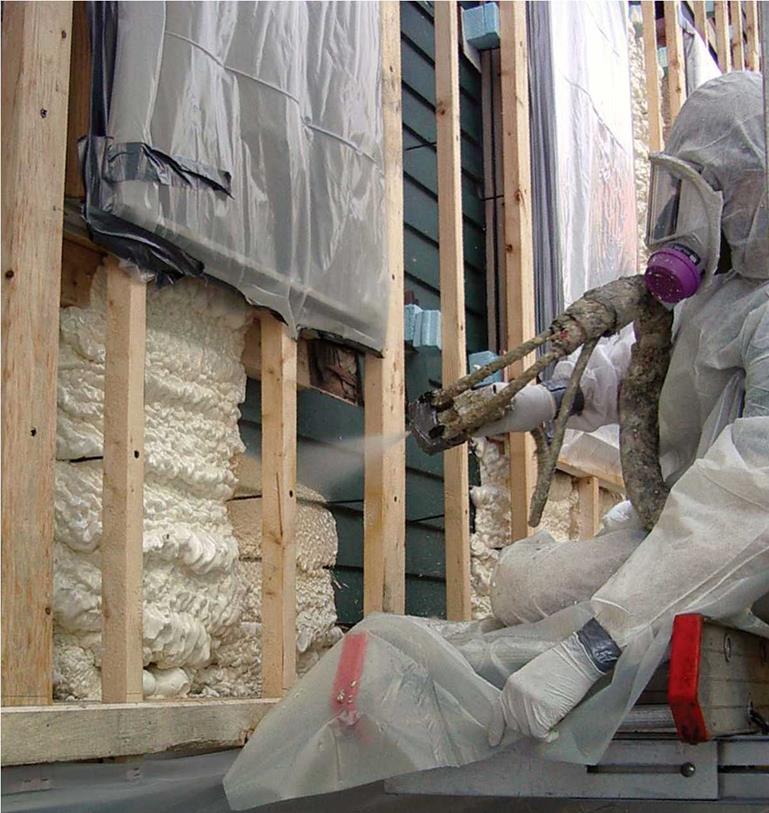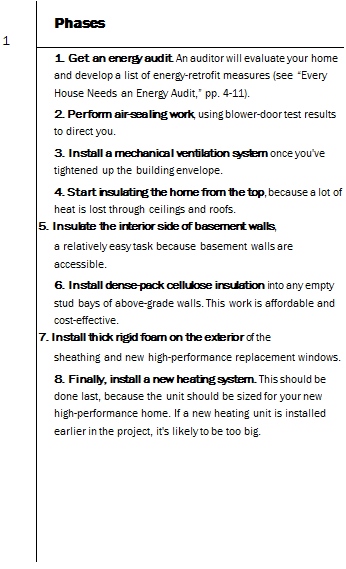A Practical Look at Deep-Energy Retrofits
 ■ BY MARTIN HOLLADAY
■ BY MARTIN HOLLADAY
|
I |
f you pay any attention to building science, you have probably seen the term "deep-energy retrofit"—a phrase being thrown around with the colloquiality of "sustainability" and "green." Like the word "green," the term "deep-energy retrofit" is poorly defined and somewhat ambiguous. In most cases, though, "deep-energy retrofit" is used to describe remodeling projects designed to reduce a house’s energy use by 50% to 90%.
Remodelers have been performing deep – energy retrofits—originally called "superinsulation retrofits"—since the 1980s. Most deep-energy retrofit projects are predominantly focused on reducing heating and cooling loads, not on the upgrade of appliances, lighting, or finish materials.
While a deep-energy retrofit yields a home that is more comfortable and healthy to live in, the cost of such renovation work can be astronomical, making this type of retrofit work impossible for many people. Those of us who can’t afford a deep-energy retrofit can still study the deep-energy approach, using it to shed light on more prac
tical and cost-effective measures to make any home tighter and more efficient.
No standard-setting agency has established a legal definition of a deep-energy retrofit, but the term generally refers to retrofit measures that reduce a home’s energy use by 50% to 90% below that of a code-minimum house— or, according to a more lenient definition, below preretrofit levels. Probably fewer than 100 homes in North America have completed deep-energy retrofits that conform to the strictest definition of the term.
A house that has undergone a deep – energy retrofit typically ends up with R-20 basement walls, R-40 above-grade walls, R-60 roofs, and U-0.20 windows. A typical airtightness goal, determined by a blower-door test, is 1.2 ACH (air changes per hour) at 50 pascals.
A deep-energy retrofit doesn’t make sense in all climates, and not every home is a good candidate for the work. Cold-climate homes often have higher energy bills than homes in more moderate climates, so a cold-climate

An old house with a new shell. This deep-energy retrofit in Somerville, Mass., received 4 in. of spray polyurethane foam on its exterior. (For more information, see the case study on p. 45.) However, not all energy upgrades have to be so elaborate.

home may be a better candidate than a home in a moderate climate or a home that already has low energy bills. A house with a simple rectangular shape and a simple gable roof is easier and less expensive to retrofit than a house with complicated exterior elevations, bay windows, dormers, or a roof full of hips and valleys. Most of the deep-energy retrofits include the installation of a new layer of exterior insulation. Intricate architectural details add to the difficulty of such retrofit work, driving up costs. Homes with simple exterior trim and uncomplicated cornice details are much easier to work on than Victorian homes with gingerbread trim. Because many deep-energy retrofits require existing roofing and siding to be replaced, the best candidates for deep-energy retrofit work are houses that are in need of new roofing and siding.






Leave a reply